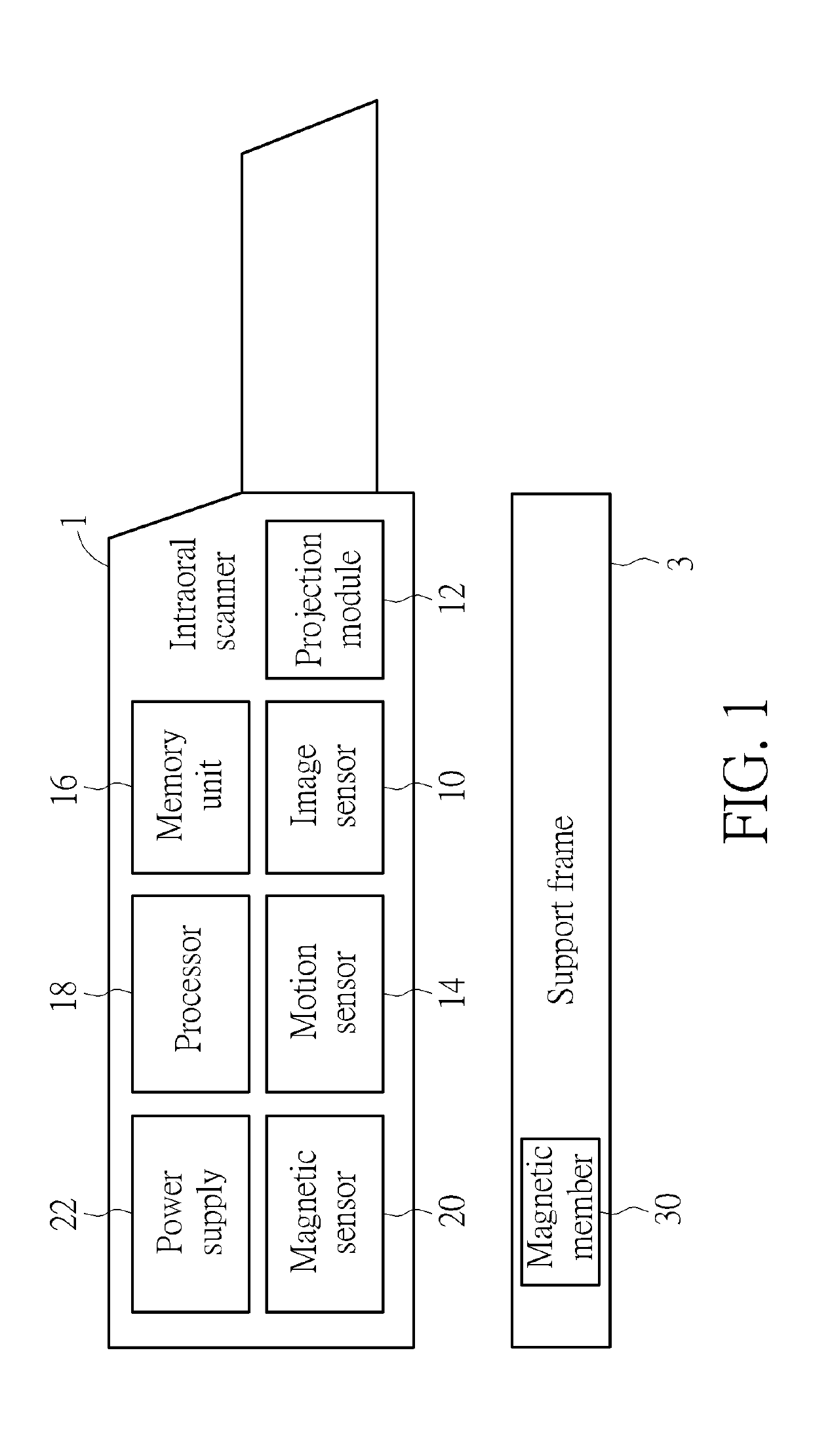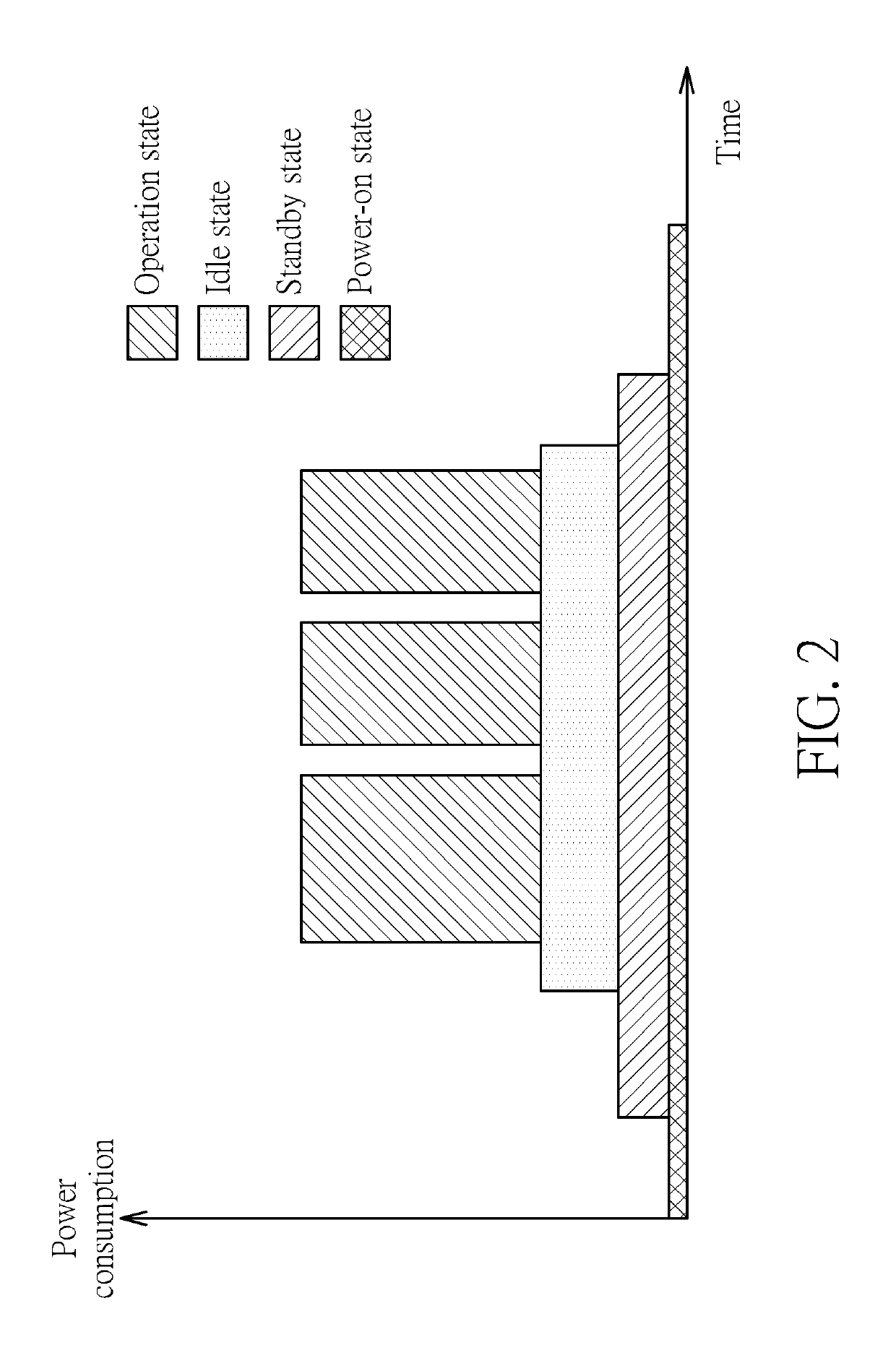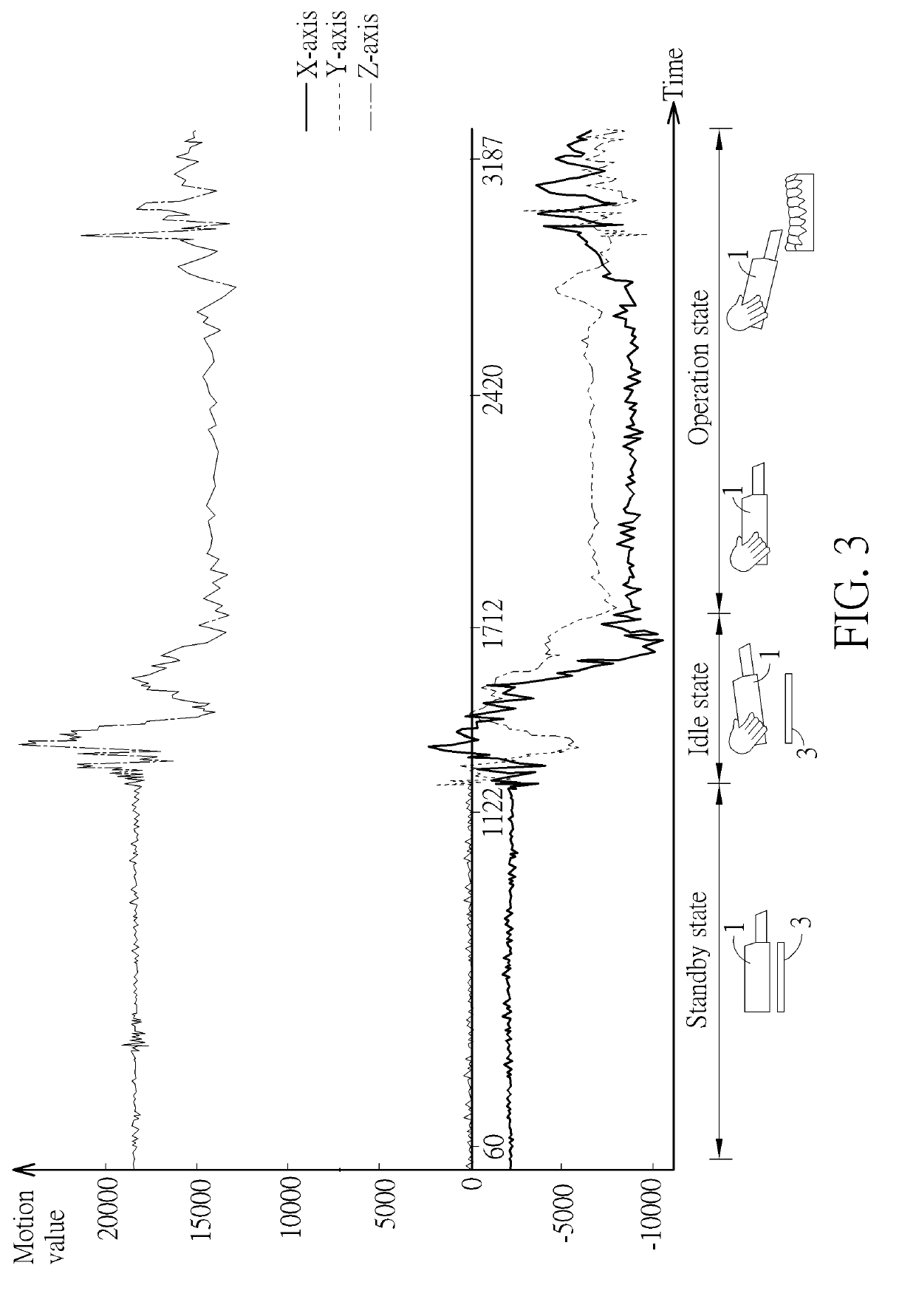Intraoral scanner, intraoral scanning system and method of controlling intraoral scanner
- Summary
- Abstract
- Description
- Claims
- Application Information
AI Technical Summary
Benefits of technology
Problems solved by technology
Method used
Image
Examples
Embodiment Construction
[0019]Referring to FIGS. 1 to 3, FIG. 1 is a functional block diagram illustrating an intraoral scanner 1 according to an embodiment of the invention, FIG. 2 is a schematic diagram illustrating power consumption of the intraoral scanner 1 in different states, and FIG. 3 is a curve diagram illustrating three-axis motion state of the intraoral scanner 1 sensed by the motion sensor 14.
[0020]As shown in FIG. 1, the intraoral scanner 1 comprises an image sensor 10, a projection module 12, a motion sensor 14, a memory unit 16, a processor 18, a magnetic sensor 20, and a power supply 22, wherein the processor 18 is electrically connected to the image sensor 10, the projection module 12, the motion sensor 14, the memory unit 16, the magnetic sensor 20, and the power supply 22. The power supply 22 is configured to supply power to the image sensor 10, the projection module 12, the motion sensor 14, the memory unit 16, the processor 18, the magnetic sensor 20, and other electronic components.
[...
PUM
 Login to View More
Login to View More Abstract
Description
Claims
Application Information
 Login to View More
Login to View More - R&D
- Intellectual Property
- Life Sciences
- Materials
- Tech Scout
- Unparalleled Data Quality
- Higher Quality Content
- 60% Fewer Hallucinations
Browse by: Latest US Patents, China's latest patents, Technical Efficacy Thesaurus, Application Domain, Technology Topic, Popular Technical Reports.
© 2025 PatSnap. All rights reserved.Legal|Privacy policy|Modern Slavery Act Transparency Statement|Sitemap|About US| Contact US: help@patsnap.com



